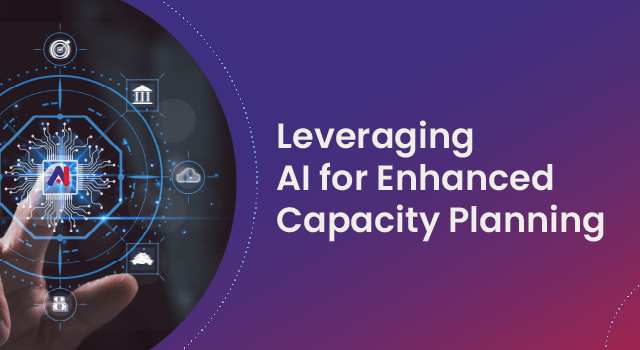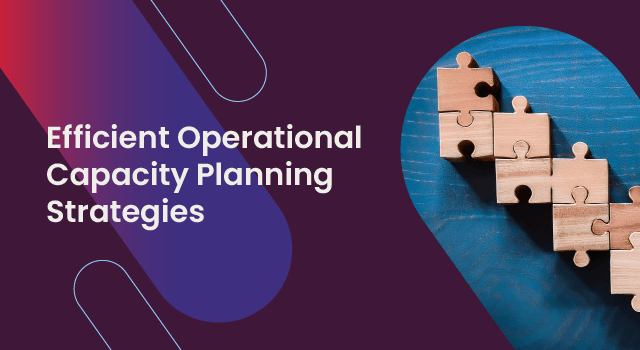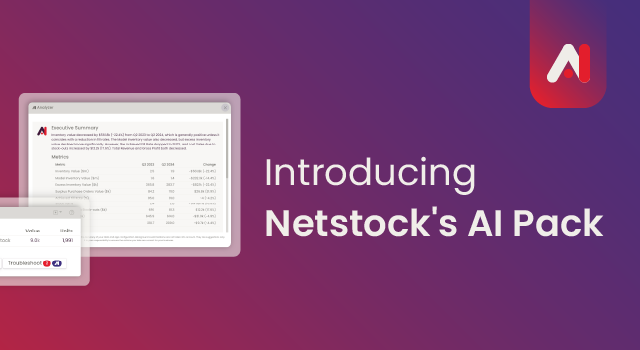In today’s fast-paced world of complex supply chains and unpredictable demand, how can businesses stay ahead of the curve? Only those who manage their resources with agility and precision will thrive. That’s where capacity management software comes in—offering a game-changing advantage. Imagine being able to optimize your resources, cut costs, and eliminate bottlenecks, all while improving service delivery. With the right tools, you can streamline your supply chain and gain the efficiency needed to outpace your competition.
In this guide, we’ll examine vital factors in choosing the best software for your business and help you achieve immediate benefits and long-term business success.
What is capacity planning software?
Every planner faces conflicts and challenges in choosing the best resource combination to meet future demands. Capacity planning software unravels this problem to establish balanced resource utilization at the lowest cost. The process involves establishing the available capacity, and forecasting demand. Then, it considers the information to create a balanced and efficient workflow.
Businesses use capacity planning to plan production while avoiding the expenses of over- or underutilization of resources. Capacity planning software automates and improves the process, providing planners with tools to track, analyze, and forecast resource requirements.
The software provides real-time data, enabling you to pivot in response to shifts in supply and demand. It will identify bottlenecks, simplify scheduling, and produce production schedules that cut costs and improve productivity.
Many businesses—including the industrial, information technology, and services sectors—use capacity planning software extensively.
Key features to look for in capacity planning software
Your investment in capacity planning software is an important decision. To ensure that the software you buy fulfills your needs, look for the following features:
Demand forecasting
Advanced demand forecasting with data analytics will provide more accurate forecasts. Demand forecasting drives the supply chain, and the better the forecasting tool, the more accurate the planning and the more agile your business will be. AI-backed software analyzes vast databases, taking account of past sales and external data for more precise resource planning and management.
Resource scheduling
Effectively distribute resources among projects and manufacturing lines for efficient operations. Reduce downtime and eliminate bottlenecks, while ensuring resources that satisfy client demand.
Performance analytics and reporting
Continuous improvement is crucial to effective capacity management. Track key performance indicators (KPIs) like resource utilization, productivity, and capacity usage. For this, you’ll need performance analytics and reporting functions. Use these insights to monitor efficiency, identify trends, and improve operations.
Scenario planning
Use scenario planning tools to simulate changing demand and capacity events. Prepare contingency plans for sudden demand spikes, machine downtime, or supply chain problems. Scenario planning allows you to assess the impact of various circumstances and test strategies to maintain productivity and customer satisfaction.
Assessing software scalability and integration
As your business grows, it will become more complex, and data volumes will increase. You’ll need software that can handle increased demand without sacrificing performance. Look for modular features or customization options that allow you to add functionalities to support changing operational needs. Look for robust APIs for custom integrations to tailor the software to your workflows and connect to third-party applications.
If you have an ERP, CRM, or inventory management software, you’ll need a system that integrates seamlessly with existing systems for streamlined data processing. Integrated systems enable real-time data synchronization, so all systems work together to provide a single source of truth.
Importance of user-friendliness and support
When installing new software, user adoption is often a problem. A user-friendly interface will help to smooth the way and encourage software acceptance.
A clean, intuitive UI reduces the learning curve, enabling team members to use the platform quickly. It’s helpful to choose a platform that allows users to tailor the interface to display the most relevant metrics. Give them customizable dashboards and reporting options to improve efficiency.
Reliable vendor support and training will ease the onboarding process. Assess the vendor’s support options, including availability and the channels used (phone, chat, email). Rolling support and regular software updates show the vendor’s commitment to improving the product.
Benefits of implementing capacity planning software
Investing time and money in capacity planning software should bring several benefits:
- Optimized resource utilization: Avoid expensive overutilization and wasteful underutilization.
- Cost reduction: Effective capacity planning reduces overtime, reduces project delays, and prevents excess inventories.
- Improved customer satisfaction: Improve service delivery and customer retention by matching supply with forecast demand.
Common challenges and how to overcome them
Here are the main challenges to keep front of mind:
Data quality: Capacity forecasting requires clean and accurate data. Validate and standardize data before you use it. Formats like dates, units of measure, and naming conventions must be standard. Remove all duplicate entries and outdated data and reconcile conflicting entries. Install regular data audits to check and correct accuracy and validity problems.
Integration hurdles: Integrating capacity planning software into a company’s existing IT infrastructure may present a challenge. Address integration hurdles using API interventions where possible.
Change management: People often resist change, slowing implementation. Clear communication and inclusion will help to overcome these issues. Training accelerates new system adoption.
Choosing the right software for your organization
Capacity planning software is a critical investment and must meet your business needs. Consider these factors in choosing the best capacity planning software:
Does the software fit the needs of your industry?
Industries have different capacity planning needs. Do the capacity planning applications have specialized features or customization options that support your business challenges? Does the software cover the regulatory standards and performance metrics you need?
Will the software scale as your business grows?
Look for software with features that expand and adapt to higher data volumes and resource needs in more complex environments. Choose scalable software to avoid costly software changes as your business grows.
Will the software integrate with your existing it set-up?
The only way to avoid silos and improve data accuracy is to fully integrate your capacity planning software with the current ERP, CRM, or inventory management software.
Does the software have an intuitive user interface?
Choose software with a user-friendly interface to reduce the learning curve and promote system adoption. Look for customizable dashboards, easy navigation, and clear reports.
Understand the level of support offered by the vendor
Does the vendor offer ongoing support, round-the-clock assistance, and regular software updates? Without these, your team cannot maximize the software’s potential.
Customer success: Edwards Garment achieves $900,000 reduction in inventory.
Edwards Garment, a US-based uniform apparel distributor, achieved significant inventory management improvements after implementing Netstock IBP. Previously, Edwards managed the planning of over 50,000 SKUs using spreadsheets—a time-consuming process that led to annual inventory write-offs of around $1.2 million.
By integrating Netstock with its ERP, Edwards streamlined forecasting, scenario planning, and inventory monitoring. This optimization reduced their annual write-offs from $900,000 to around $300,000 by better managing orders and stock levels. With Netstock’s real-time dashboards and drill-down features, Edwards gained accurate demand forecasts and greater inventory visibility, allowing them to better respond to unexpected demand shifts.
Netstock’s ‘what-if’ analysis further empowered Edwards to test various scenarios, helping them understand inventory needs and the financial impact of supply chain disruptions. This enabled precise adjustments in capacity and better preparation for market changes.
Read the full story here.
Take your business to new heights
In today’s complex business environment, effective capacity planning software is crucial for driving operational efficiency through accurate forecasting and optimized resource allocation.
When selecting a solution, prioritize scalability, seamless integration with your current systems, and ease of use. The right software should not only meet your immediate needs but also adapt and grow with your business to support long-term success.




